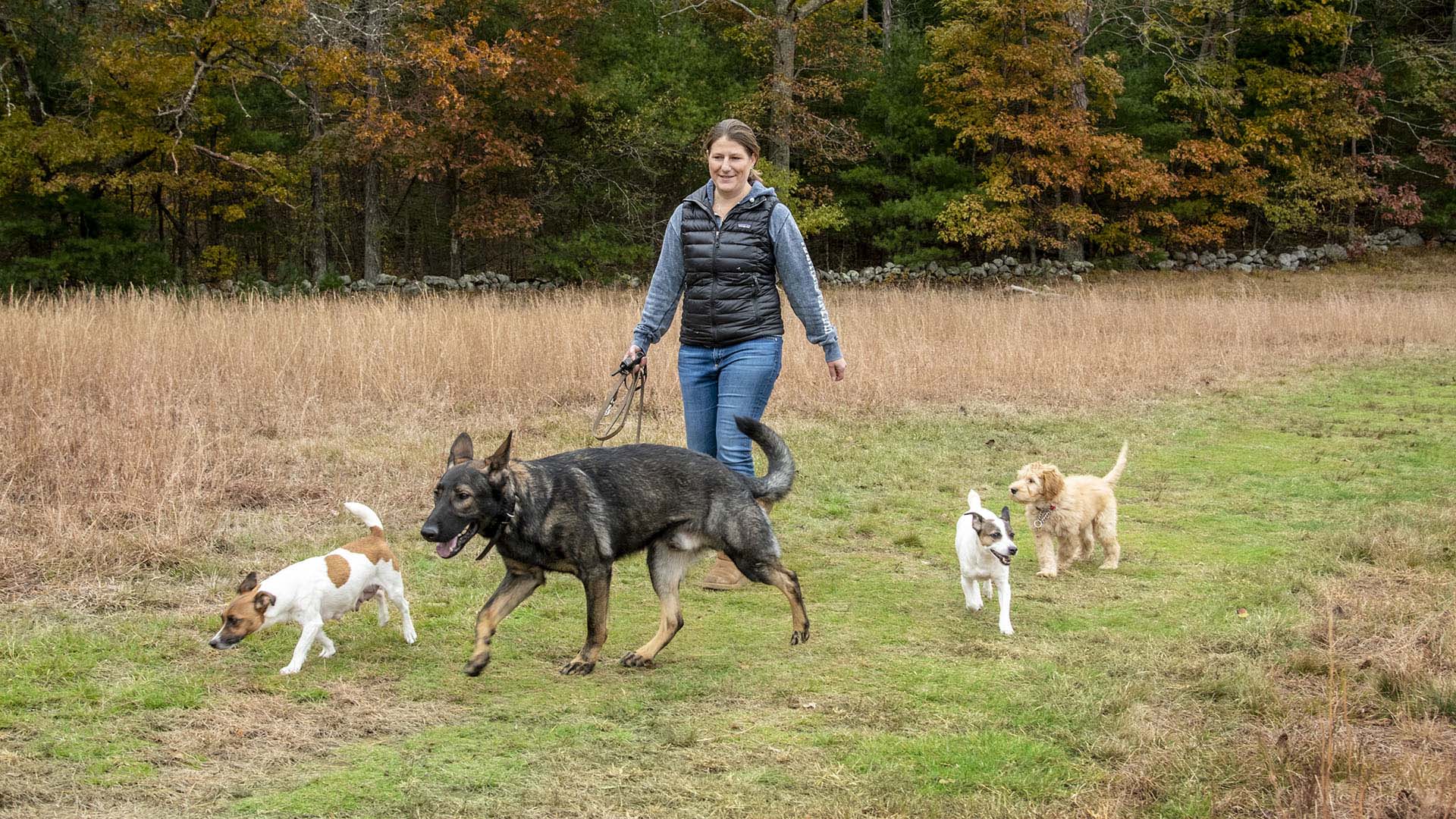 978.468.1616
978.468.1616

You know the expression “you can never get too much of a good thing?” When it comes to your dog and exercise, less can sometimes be more.
How can you tell what the perfect balance is? Over a thousand years ago, a great Chinese physician, Sun Ssu-mo, wrote: “Flowing water never stagnates, active hinges never rust.” The Taoist tradition in China—one of the most complete preventive health care systems—recognizes physical and mental exercise as vital in maintaining optimal balance in the energy systems which make up the life force of an individual.
Unfortunately, many dog owners think of “exercise” as only a physical form of exertion for their pets. Without adequate opportunities for mental stimulation as well, exercise alone might leave a dog feeling bored, agitated and distracted. Just the opposite of what you might have intended when you set out for a long hike designed to tucker out your pet!
While it’s critical that your dog receives an adequate amount of physical exertion, you need to have a more holistic approach that also includes challenging mental exercise. Here are 10 tips for keeping your dog’s chi flowing:
Too much exercise for young, growing dogs can lead to developmental bone disease that could be permanent. For dogs less than a year old, limit strenuous exercise. While jogging with your puppy might seem pleasant for both of you, the steady pace, especially on flat, paved surfaces, is the worst thing for its underdeveloped bones. A better alternative is short sprints, no more than 20 minutes at a time, that include some varied terrain, with plenty of changes in direction. This will help avoid stressing your dog’s musculoskeletal system.
If your dog shows pain, stiffness, shortness of breath or reluctance to move after exercise, consult your veterinarian. There may be underlying problems.
Start gradually on any new program, have warm-up and cool-down periods and offer access to plenty of fresh water.
A dog’s tolerance for extreme cold and heat varies from breed to breed. Don’t make assumptions about what its tolerance level is when you embark on any rigorous or extended activity or outdoor exposure. For example, huskies or Newfies appear to thrive in cold temperatures, but too much exposure can still cause physical trauma.
Likewise, although a Rhodesian ridgeback evolved to withstand equatorial heat, this doesn’t mean it should be left outdoors for hours with its toys on a blistering summer day. Always examine your dog after being outdoors during extreme temperatures to look for signs of over-exposure.
Walking in a loop around the neighborhood is better than nothing, but physical exertion which puts different muscle groups to use—for example, leaping, hauling and sprinting—will develop your dog’s overall level of fitness.
Dogs can easily get bored with the same-old-same-old. If you have fallen into the routine of walking your pet on the same predictable route each day before leaving for work, change direction or add a new route. Shorten or lengthen the duration of the outing and throw something else into the mix to introduce a sense of novelty and mystery. Or walk at a different time of day compared to your regular schedule. Your dog will thrive on the intrigue and variety.
Your dog sees you as its leader, companion and care-giver. But a dog that doesn’t get ample time to romp and frolic with other dogs is being cheated out of an opportunity to experience the unspoken communication which dogs can share only with each other.
All too often, I see people congregate at popular dog-walking spots and then stand around drinking their lattés while the dogs are left to their own devices. While it’s true that dogs need to interact with other dogs to develop and maintain their social skills, they can easily get overstimulated with unfocused activity. It’s up to you to take the lead.
Keeping your dog’s brain working on constructive games and exercises prevents it from looking for other ways to keep mentally stimulated. If left on its own, your dog’s choice of mental diversions might also be destructive, such as inappropriate chewing or digging. Dogs come by their curiosity naturally. If you give your dog a goal to achieve or a game at which to succeed, it will be less likely to set out on its own exploration. This is why basic training, advanced training and learning tricks are such important parts of a dog’s routine throughout its entire life.
Don’t assume that taking twice as long to walk the neighborhood means that your dog doesn’t want or need to get out. And if only short walks are all it can handle physically, don’t assume this means your dog can’t handle mentally stimulating activities. Older and injured dogs whose physical abilities are limited often blossom when given something challenging, such as hide and seek or a gentle game of catch.
